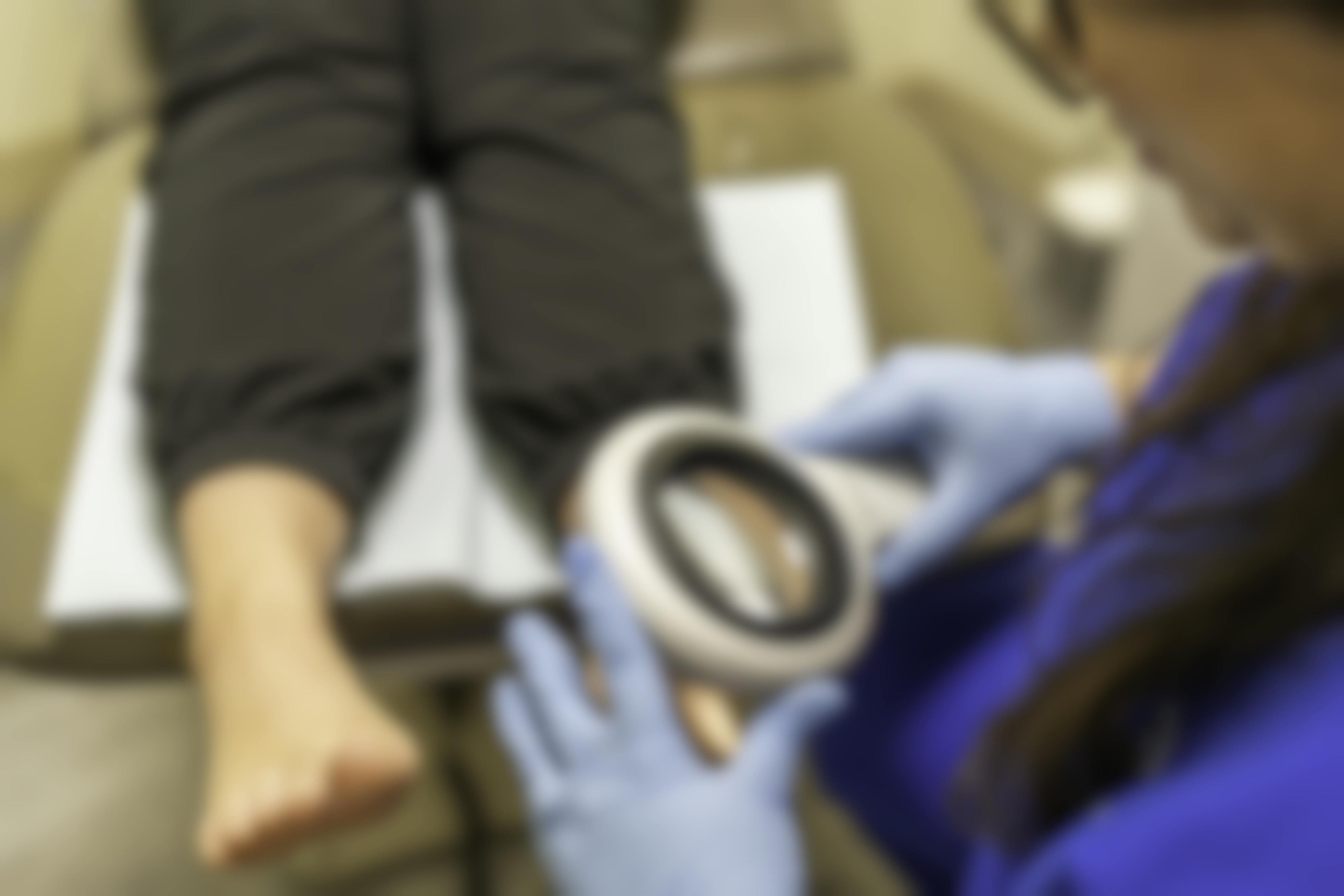Symptoms
- Cracked Foot Not Healing
- A Growing Assymetric Patch
- A sore that appears for no reason and does not heal
- A circular nodule with a depression in the centre
- An isolated rough area on the skin
- A resilient plantar wart
Melanoma is the most dangerous type of skin cancer, and is caused by changes in melanocytes, which produce a skin pigment called melanin. Often patients will neglect to inspect between their toes, nail beds, and soles of their feet. Visiting your podiatrist is one of the best ways to avoid missing suspicious lesions (that might otherwise be missed by you). Ask your podiatrist to inspect the skin of your feet and ankles, especially if a family history was positive for skin cancers.
Podiatric Interventions

The Diagnosis of Melanomas
The soles of the feet have a unique skin that can develop coloured tumours, even without exposure to the sun. This area is conducive to the formation of melanoma and other skin cancers. Our clinic is geared towards preventing melanoma as well as improving your health. The podiatrist will arrange a full examination to detect the presence of benign or malignant lesions.
Prevention of Skin Cancer
During a preventive consultation, the podiatrist performs a medical history, physical examination, and, if necessary, a minor skin biopsy. A small sample of the skin will be sent to a laboratory specializing in pathology. This service is offered exclusively at our clinic. Contact us for preventive detection of skin cancer.
Know the ABC's of Melanoma
Skin cancer can result from damage caused by the sun’s rays. The skin of the feet can also be the site of cancers caused by viruses, chemical exposures, chronic inflammation, and irritation. Feet are rarely discussed during medical visits. At our clinic, the podiatrist carries out a complete inspection at each visit in the interests of preventive health. In addition, you can also perform an inspection of your feet using the ABCs of melanoma:
Asymmetry: The visible shape is asymmetrical; when divided in half, the two parts of the lesion are unequal.
Border: The contour of the lesion is irregular and sometimes diffuse.
Colour: May contain more than one colour as well as different tones.
Diameter: The lesion is more than 5 mm in width and can grow over time.
Elevation: The skin texture is different to the touch compared to other areas of the body.
FAQs
What Are the Incidence and Risks of Melanoma?
The risks of skin cancer are considerable. Due to the increased incidence, the risk of developing melanoma in 2010 was about 1 in 50 compared with 1 in 1,500 in 1930, representing an increase of 2,000%. Therefore, preventive counselling is recommended to rapidly detect the presence of skin cancer and prevent malignant melanoma, the deadliest skin cancer.
When to Consult for Melanomas?
As soon as you become aware of a suspicious lesion on your foot, it is recommended that you consult a podiatrist to prevent contagion. In order not to distort the diagnosis, it is recommended that you apply no medication for three weeks prior to your consultation.
Who Is Most at Risk of Melanomas?
People whose family and personal histories reveal the presence of skin cancer are at higher risk. Moreover, the frequency of sunburn can increase the risk of developing melanoma. Finally, artificial tanning is also a risk factor for skin cancer. Note, however, that the sun is not the main cause of skin cancer of the feet. The NDG Podiatry Clinic specializes in the prevention and diagnosis of melanomas and other foot diseases. Visit our podiatrist today.
